Sand Bedding for Chicken Coops: Why I’ll Never Switch Back
Switching to sand bedding keeps your coop cleaner, drier, and easier to maintain. Learn which sand to use, how deep, and how to keep it fresh.
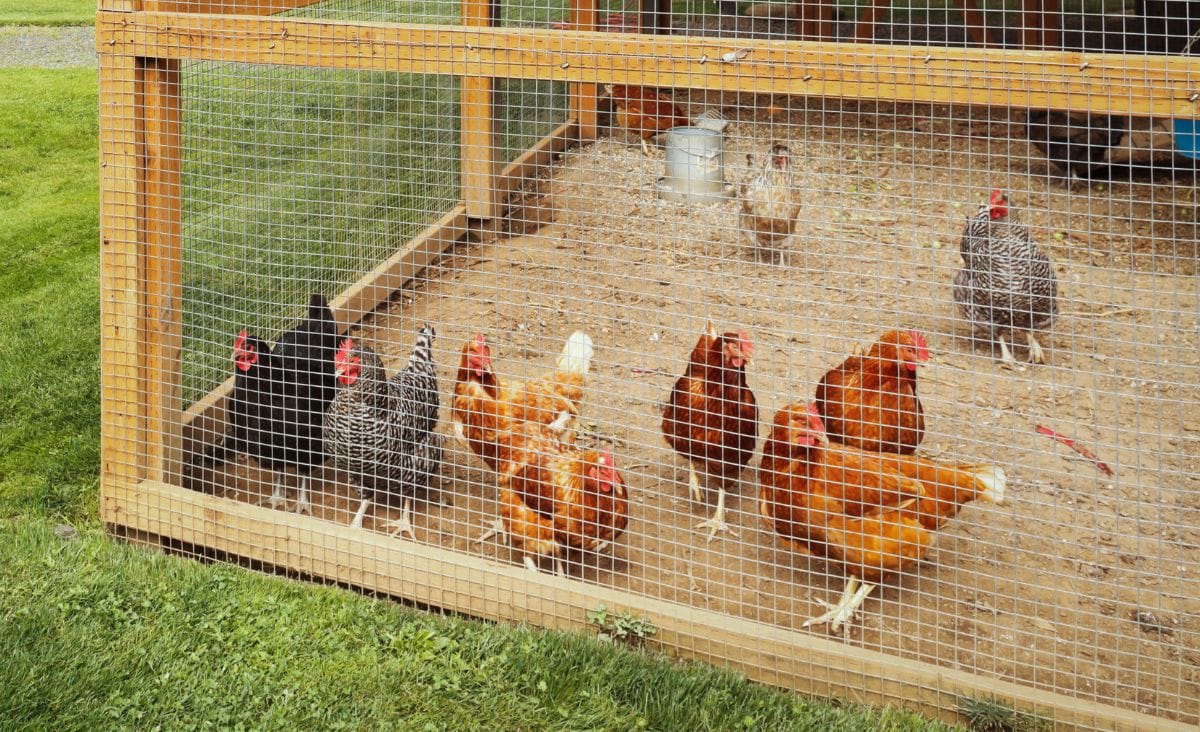
When I first started raising chickens, I never gave much thought to what went on the floor of the coop. Pine shavings? Sure. Straw? Why not. But then the mud came. The smell came. And suddenly every trip to the water station felt like balancing on a slip-n-slide.
That’s when I discovered sand. Honest truth? Switching to sand bedding in my chicken coop was one of the best decisions I’ve ever made for my birds—and for my sanity. Clean feet, no stench, and a coop that finally felt like I had my act together.
If you’ve been wondering whether sand is a good bedding choice, which type to buy, or how to keep it working year-round, here’s what I’ve figured out since switching to sand back in 2013.
Why Sand Bedding Works So Well
Here’s the kicker: sand solves problems that traditional bedding creates. Pine shavings get soggy, straw molds, and everything starts smelling like a barnyard in July. Sand, on the other hand, dries out droppings, controls odor, and actually keeps chickens’ feet clean.
It also saves on feed because pellets sit right on top instead of disappearing into a deep litter. I’ll admit, I like that it makes the coop look tidier too. A clean, dry coop just feels better to walk into.
The Big Pros (And Why I’ll Never Switch Back)
Sand keeps the coop fresh by drying droppings quickly and preventing ammonia buildup. My hens had cleaner feet, fewer scrapes and sores (bumblefoot), and just looked more comfortable walking around. They also dust bathe in it constantly, which doubles as natural mite control.
Another bonus is climate. Sand stays cooler in the heat and doesn’t trap dampness in the winter. When it does come time to swap some out, you don’t have to haul the whole load to a compost pile all at once—that’s usually too much material in one go. I just toss some into the compost here and there so it doesn’t swamp the pile, and it helps break up all that heavy, clumpy mess. I’ve also used it to fill in muddy spots in the yard, add drainage to garden beds, or improve pathways around the homestead. If you have clay soil, mixing small amounts of sand over time helps loosen it and improve aeration.
If you’re new to building a hot, balanced pile, Composting for Beginners: The Ultimate Starter Guide shows you how to layer browns and greens so small additions of sand don’t stall the process.
Choosing the Right Sand for Your Coop
Not all sand is created equal. The kind you pick makes or breaks how well this system works.
Bank run sand is my top choice because it has a natural mix of fine and coarse particles. The pebbles keep it from compacting and help with drainage—perfect if you live somewhere wet. Construction sand is similar, affordable, and easy to find. All-purpose sand will work in a pinch, though its uniform grains tend to pack down faster.
Then there’s play sand. Don’t do it. It’s too fine, it turns to sludge when wet, and the dust can cause respiratory problems. Skip it and save yourself the frustration.
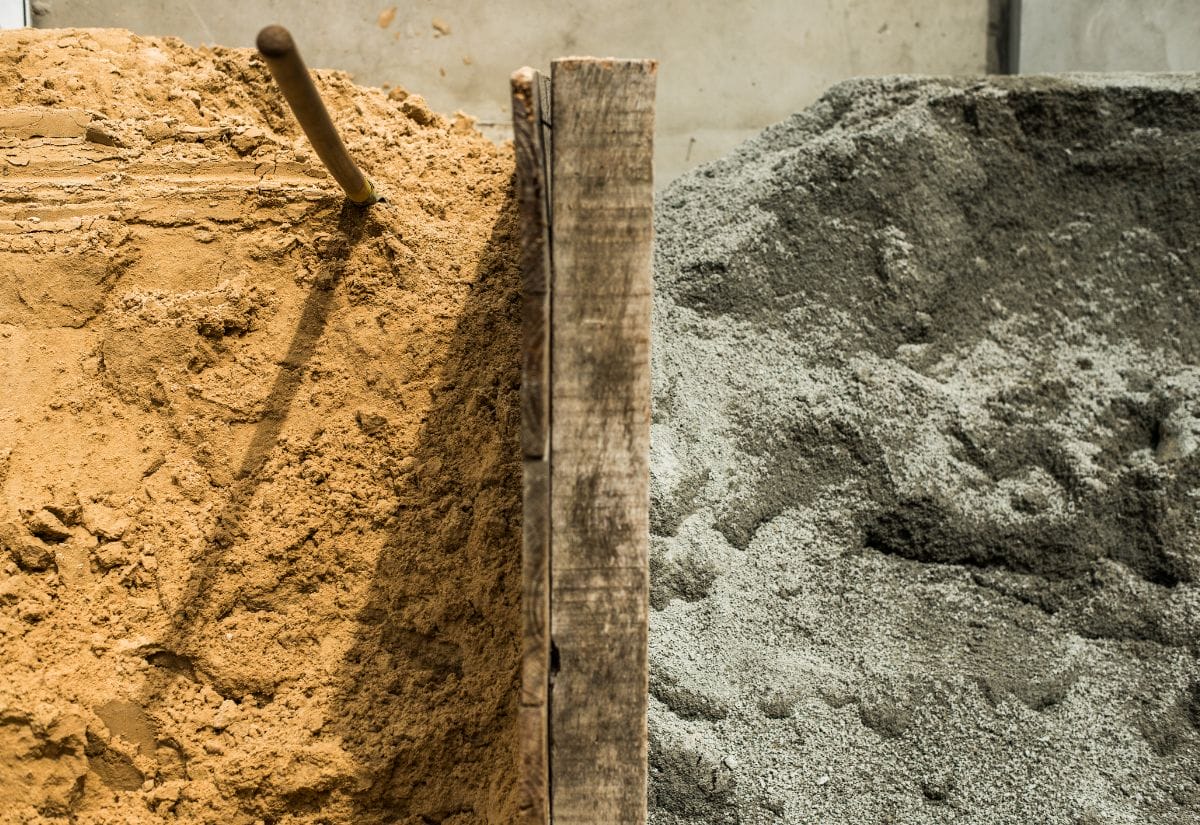
Tip: Buy sand locally if you can. Quarries, landscape suppliers, and sometimes even garden centers carry the good stuff. Delivery usually costs less than trying to haul it in your own truck. If you can’t find a local source, you might track down smaller bags of construction sand online—but honestly, if you need a full coop’s worth, buying local is almost always the better deal.
How Deep Should Sand Be?
Depth depends on your coop setup. In a raised coop with a plywood floor, three or four inches of sand is enough. On the ground or in an enclosed run, go six to eight inches so moisture drains properly. If your coop sits on soggy soil, lay down a few inches of gravel first. It makes a huge difference in preventing muck.
Cleaning and Maintenance
This is where sand really shines. I rigged up a stall rake with some hardware cloth, and now it works like a giant litter scoop. Cleaning takes me maybe two minutes, tops.
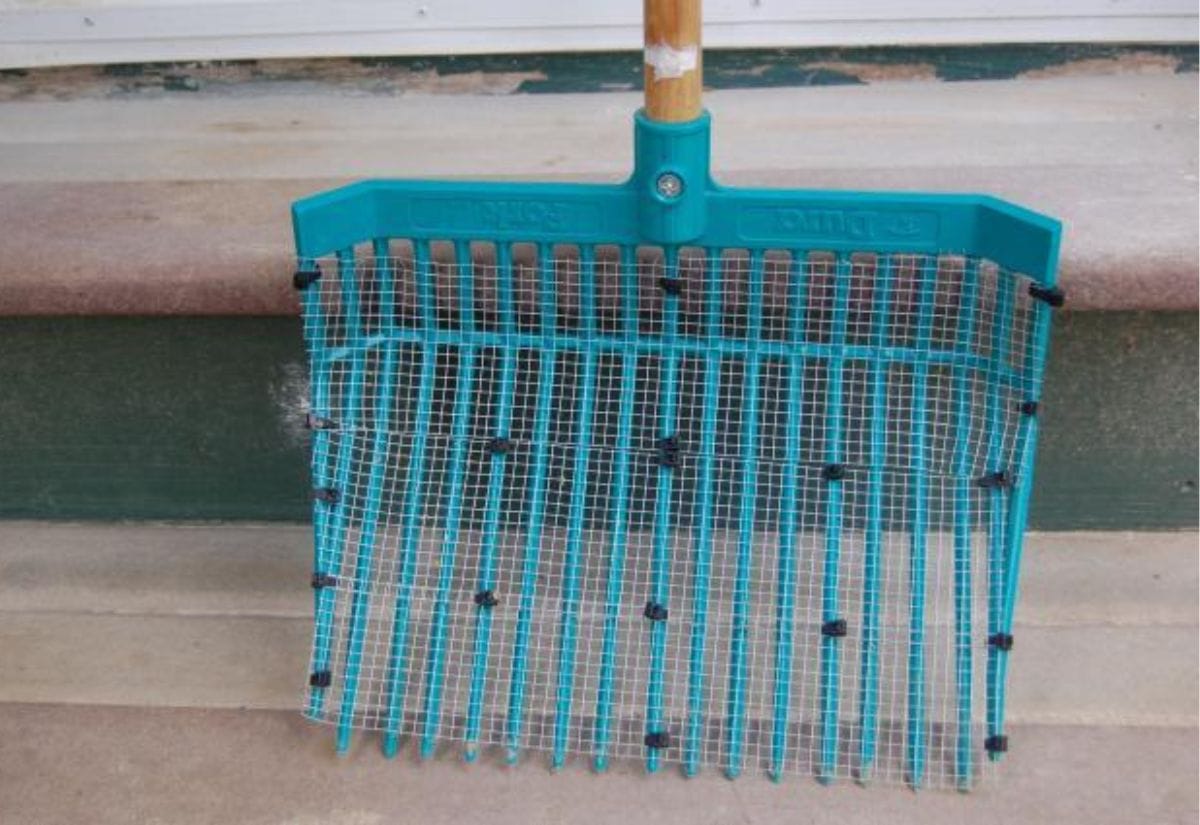
Seasonally, I sprinkle in wood ash during the winter or food-grade DE in the summer. Both help with pests. A couple of times a year, I freshen things up with pelletized lime or Sweet PDZ and add more sand where it’s packed down. Then, once a year, I do a full cleanout and start fresh.
If you’re setting up or tweaking your space, Roost to Run: The Elements of Perfect Chicken Coop Design walks you through smart roost placement, floor plans, and ventilation so your sand system works even better long-term.
Pro tip: Sand only works if you keep up with it. Neglect it, and it’ll smell just like any other bedding.
Troubleshooting Common Problems
If odor creeps in, it usually means the sand is too shallow or not draining. Adding depth—or refreshing under the roosts more often—solves it. In wet climates, sand can compact; raking helps, or you can lay down gravel before adding more.
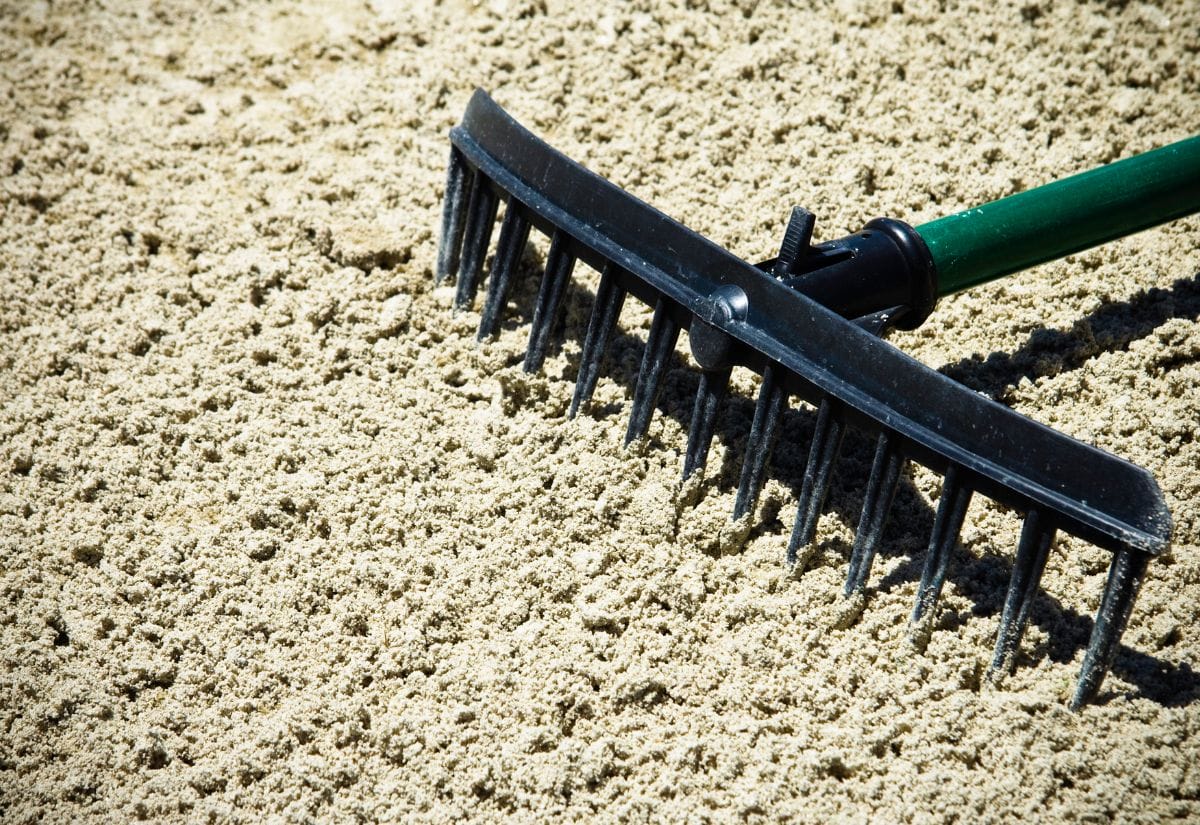
Extreme weather poses its own challenges. In summer, sand can heat up in direct sun, so make sure part of the run is shaded. In winter, the surface layer may harden, but a deeper base keeps it from freezing solid.
Pests love damp bedding, so as long as you keep the sand dry, you’ll dodge most of those headaches. I keep a bag of food-grade DE on hand and a bucket of Sweet PDZ for freshening the run, but use it sparingly.
For a whole-yard strategy that keeps hens safer day and night, see Best Way to Protect Chickens from Predators in Your Backyard—it covers hardware cloth sizes, dig-proof skirts, and lighting that actually deters prowlers.
Using Sand in a Brooder
Sand works here too, though I wait a few days before exposing chicks directly. I usually cover it with paper towels for the first 2–3 days so the chicks learn what’s food and what’s not. Once they’ve got the hang of it, the towels come off and the sand helps hold heat, keeps water cleaner, and doubles as grit when I start offering little treats.
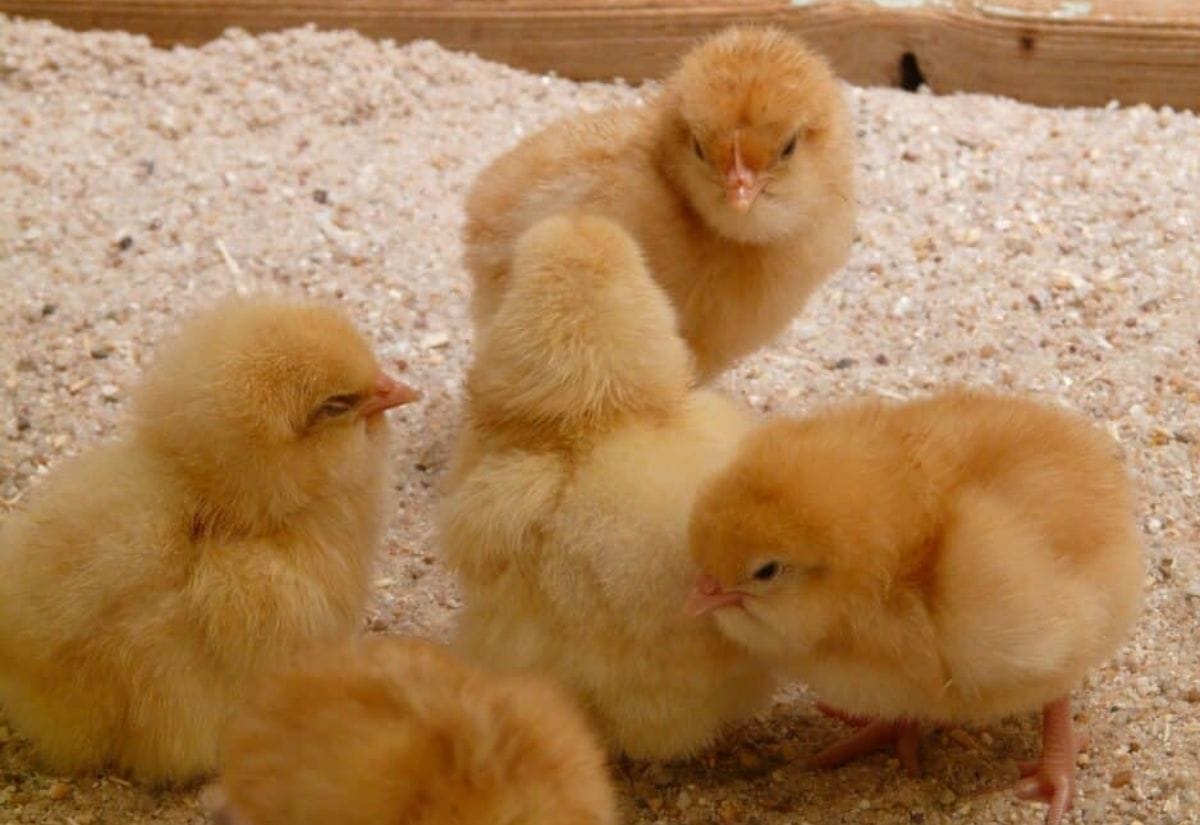
Frequently Asked Questions About Sand Bedding
People ask me the same questions about sand over and over, so let’s run through the big ones. These answers come from years of messy experiments and more than a few stinky cleanouts.
Save this guide to your chicken keeping board so you’ll have it handy when you’re ready to switch to sand bedding.
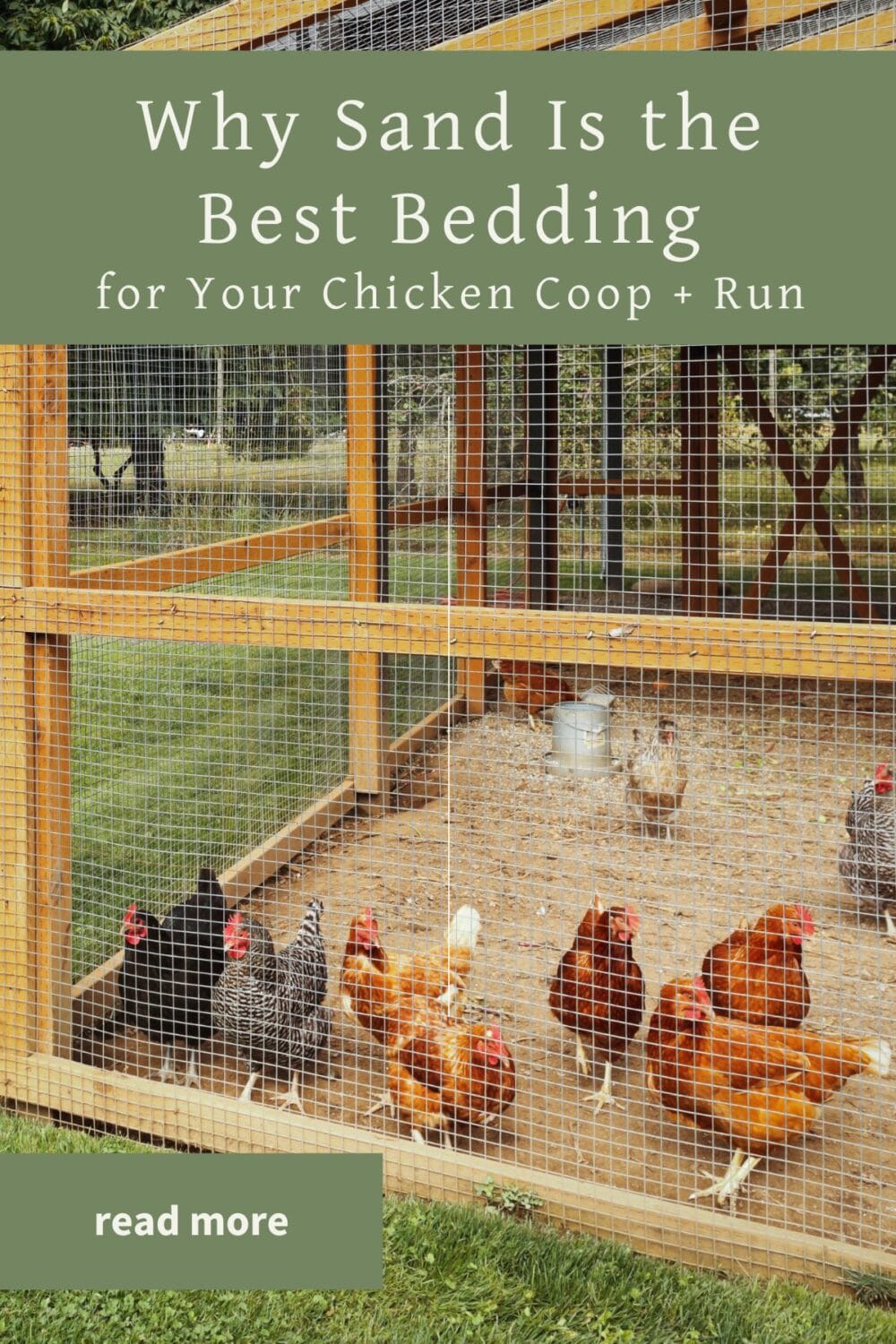
Switching to sand bedding made chicken keeping easier, cleaner, and—honestly—much less smelly for me. It cuts down on mud, keeps my birds healthier, and costs less in the long run than shavings or straw.
If you’re tired of slogging through mud and holding your nose every time you open the coop, give sand a shot. I don’t think you’ll want to go back. And if you’ve already tried it, I’d love to hear how it worked for you—share your experience in the comments or save this post to Pinterest so you can come back to it later.

Thanks for your informative article. We converted a 4’x 8′ wood shed to a coop and built a shelf under their roosting bars. On the shelf we used rectangular oil pans and on the floor of the coop we used linoleum. But we’re using a bucket with water nipples and they drip, making it impossible to keep the sand dry. How much sand should we be using in the oil pan and on the linoleum, and should we be worrying about the wet sand under the water nipples? Thanks!
Moisture in the coop is a bad thing regardless of the bedding you use (though sand will dry faster than organic bedding and it won’t mold). Maybe try a boot tray with pebbles under the nipple waterer to catch drips.
Even if we put a boot tray with pebbles under it, that would still be moisture in the coop, right? I guess if I had a boot tray with pebbles, any drips could be sopped up with paper towels.
That was what I was thinking. Or you can omit the pebbles and they can drink the water that drips. Have you considered cup drinkers? I had the same issue with nipples, so I only use them outdoors. I have cup drinkers in the coop attached to a rain barrel. No drips to deal with.
Hi
New chicken farmer here. About to get chickes in a few days was wondering if teh samd from home Lowes would work like the QUIKRETE 50-lbs All-Purpose Sand. Does silica harm the chickens? Should I look for silica free sand?
Thanks for help
Tony
I think that should work just fine, but if you need a bunch, it might be more cost effective to go to a quarry.
As far as silica, that’s up for debate. The sand I use contains silica as does the land where my chickens range. We’ve never had an issue.
Great thank you so much for th reply!!
I noticed that you mentioned using DE in your sand. Please do not use DE. The safe handling instructions on it say humans must wear a mask, and it is known to cause respiratory infections in chooks. Please see http://www.the-chicken-chick.com for a great article on this subject.
I am a big fan of Gail Damerow (who Kathie quotes in her post on DE), but I can’t say I completely agree with her. When I wrote my book on controversial husbandry practices for chickens, I did a lot of reading and studying of the research that had been conducted. Much like Kathie, I dive into things and don’t take them right at the word of a so-called expert. I am a facts girl. Anyways, much research has been done by The Avian Research Centre of the University of British Columbia and although they question the effectiveness of DE as a supplement or antiparastic, they confirm that it is in no way harmful to the chicken. Dr. Jacob Jacquie of the University of Kentucky confirms that DE works as an excellent preventative for external parasites, but will not cure an infestation. Safe handling during application is of course very important, but fear not, DE will not harm your chicken (nor cure it).
my chicken tractor i’m building will have a large tray to keep floor clean ..can i use 2-3 inches of sand for this and not be a problem?
You mean in the living space of the tractor? Absolutely! With 2-3 inches you’ll want to be sure to do a daily scooping, but a kitty litter scoop will make quick work of it.
I was psyched about using sand in the coops and it was awesome for the first 4-6 weeks. Now I’m not happy with it at all. I can’t wait til spring so I can get rid of it.
Just a side note, love, love, LOVE The Chicken Chick aka Kathy Shea Mormino!!!!!!
I’m sorry it didn’t work out for you, but I agree that Kathy is pretty cool 🙂
I was debating on if I should get sand or not. Why were you unhappy with it? We live in Wisconsin.
Every other blogger I’ve followed and several hatcheries have advised against using sand. It can cause severe respiratory issues. Not something I’m willing to take a chance with.
A lot of intensive research as been conducted on using sand versus organic materials and sand has come out an obvious winner. That being said, I think every keeper needs to make a decision for what is best for them and their birds. Never do something you are uncomfortable with just because everyone says it’s the way it should be done.
I love using sand! It is so quick to scoop and keep clean. The girls love to dust bathe and make beds in it. It stays much drier than the ground around it and the girls’ feet are so clean I never mind them climbing up on my shoulders for a ride! I found little clear info on homesteading/backyard chicken sites when I switched but tracked down several university studies for larger operations. They said the sand stays drier, warmer in winter, cooler in summer and required less clean-up time. We were careful to buy washed construction sand. We are in the -5 to -20 range now and, although the older sand has frozen and compacted some, the newer sand is perfectly…um, well…sandy.
I love hearing another testimonial. I cited several of those studies in my book when I discussed sand as an alternative option. One of the studies takes place right here in Maine. If it works in cold Maine, it should work in any other cold climate (I say as I look outside to another day of negative temperatures).
Is there ever a problem with the chickens trying to eat the sand? I’d like to try it, but I’m worried my chickens are a little to…confused… for it.
They will eat some of it as grit to help break down their feed when they eat. As far as eating too much, causing compaction, I haven’t had an issue. The only time I can see there being risk is when chicks are very young. I typically use paper towels for the first week or two. By then, the chicks have identified what is food and what isn’t.
I am building a new coop with a dirt floor. I have lots of river rocks, all sizes. I am thinking of using about 4″ of rocks on the dirt and then using several inches of sand. Would this work?
River rocks should work really well for drainage. Since you’re starting with a new coop, here are a few additional suggestions.
– Dig down so you can allow for 3-4″ of river rock and 6″+ of construction sand. This will allow you to not lose the sand between the rocks, but have a nice sturdy floor of sand.
– When you dig, slant the floor a bit to promote water draining out. It doesn’t need to be a large incline, just enough to promote water run off where you want it.
I live in Ga and we’ve had some pretty wet days and my run is a mud bog. I had sand in their coop 4×5 and it worked great but I added straw on top for the winter. I loved the idea of gravel under the sand. We were going to dig a trench and berm to get the water away from the area. This might be a much better idea. Thanks for the idea.
I think you’ll be pleased with the results adding gravel. Use caution when laying organic materials (like hay or straw) over sand as they can get mixed in the sand and mold. I have deep nest boxes to reduce the chances of the nest box hay falling onto the sand.
We built a an 8ft. x 12ft. building this summer, thinking that half of it would be for the 8 chicks we had ordered and half for a potting shed for me. The two sides are divided with hardware cloth. We used sand on the floor, but it has created so much fine dust all over the building that is is impossible to use my potting shed half. Did we use the wrong kind of sand? We bought it at a lumber yard, by the truckload and were told it was washed construction sand.
Does it look fairly course, as in courser than sandbox sand? Chickens make dust no matter which bedding you use, though sand has less dust than most alternatives. You mentioned chicks. How old are they? Chicks are constantly growing and dropping feathers while they wait for the adult feathers to come in. These tiny hairlike feathers can create a really big mess.
Hi, I live in the uk so its pretty wet all year round. :/. Im building a run and coop at the weekend and after reading your post I’m tempted to use sand. The run will be completly covered from rain but on windy days moisture will inevitably blow in the sides where the chicken wire will be. Is sand still a good option? And if so would I be better off putting down some garden cloth before 8 inches of sand on dirt or just go straight on? Its at the bottom of a slope which gets very muddy/boggy.
Hi Craig!
I would recommend adding a layer of course gravel topped with a thick (6+ inches) or sand to assure good drainage. Except in the event of drenching rains, the water will filter through the sand and drain through the pockets created by the gravel.
This is a really great post, thank you so much. We just finished building our new coop and run and are picking up our adopted chickens today. We put sand in the coop as litter per Kathy the Chicken Chick but your informative post added some additional points I had not considered.
Donna at The Small House Homestead http://smallhouseunderabigskyhomestead.wordpress.com
We currently have a dirt floor in our coop and are using the deep litter method with pine shavings. Still having issues with the odor and have used DE and it doesn’t seem to help with odor issues and wondering if sand would work better for our coop? It’s a big coop and we have around 60 chickens in there! We’re in central Missouri.
I think sand may be a great option for you. Odor issues can be a problem with organic bedding and DE can actually make it worse. DE kills off not only the troublesome bacteria, but the good bacteria as well. The good bacteria are the ones that compost the organic matter.
We live in Central MO and are having the worst problems with our chickens. They will just not lay and are beginning to think it is the coop. We built this thing about two years ago and it is a palace compared to other temporary coops we had before. It sits right on the ground. We have been wondering if that is the cause…all wet dirt in there all the time? We have tried wood chips and hay, doesn’t help. We have to get in there with a shovel and scoop out all that wet heavy NASTY smelling goop. It looks alot better but unless we go through an extremely dry period it still remains wet. So, when you say you rake out the sand once a month, it almost sounds too easy. Is that all you really do to clean it out on a monthly basis? Just rake out the chicken poop like you cleaning a giant kitty litter box? And why do you put the ash in it in the winter? Thanks!
Moisture sounds like the problem. Moisture issues are one of the hardest things for chickens to deal with because of their sensitive respiratory systems. I recommend digging down your floor a bit, adding some crushed rock, then topping it with sand. I think you’ll find your coop stays drier and the odor dissipates.
You will want to clean your coop regularly still, but I find it goes really quickly. I do a quick clean in the morning to get what accumulated under the roosts overnight. It only takes about 5 minutes in my 8′ x 8′ coop. I do the whole floor once a month unless they have been inside a lot due to rain or snow. Then I might do it more often.
Great article! Thanks for the info! What breed of chicken is in the picture? I have some but wasn’t for sure on their breed! =)
Thank you Heather. Shes’s an Ameraucana.
yR SITE IS SOOO ENLIGHTENING…My grandmother had chickens…lots…and i watched her feed, gather eggs..wring their necks for dinner…free range in large fenced in pasture…the BEST chicken in the world…Love reading about use of sand and so much else…thanks!
Thank you so much Jan!
I never thought about putting sand in the coop, only using outside the coop in their dustbath. Interesting!
While I know that Sand has become a popular new thought in coops and runs, I am glad you pointed out that it is not the right choice for every climate. In the moist hot humid south where I am located, this would be a nightmare to keep up. We have moisture even on the hills where the coop is located. So thanks for being realistic and adding that part. Also, sand here would be so hot on the chickens feet.
What do you do with the sand you clean out of the coop once a year?
I reuse it. I shovel it out onto a big tarp and wash it with a vinegar and citrus mixture. I use one of those fertilizer containers that hooks to a hose to wash it. Then I let it “bake” in the sun for a few days. After its really dry, back in the coop it goes.
What do you put in the coop when your letting the sand dry after cleaning it?
I use a thin layer of new sand. It tends to get tracked out in the treads of muck boots or kicked out when the hens dustbathe near the door. Adding a couple inches of fresh when I pull out the old stuff brings it back to optimal depth when I put the cleaned sand back.
I read that sand is too cold in the winter in a raised coop, I live in nova scotia where it gets to be -20c sometimes. What are you thoughts?
I was talked out of keeping it in the coop during the winter last year. I regret the decision to switch it out for shavings. The shavings may have been “warmer”, but they released ammonia despite using the deep litter method. The birds were having respiratory issues and all the ventilation in the world wasn’t helping. Considering the amount of time the birds spend on the ground, I’m not worried about the chill. Wet sand is of course a concern, but no more so than wet shavings or hay. Spills must be cleaned up immediately in the winter regardless of bedding choice. I have a friend in Connecticut who has used sand in her coop for 10 years year-round and her birds are some of the healthiest I’ve ever seen.
Our pen area is a fenced but not roofed, ground area. We will cover it with wire but it’s just to big to put a roof over all of it. Will 6-8″ of sand still dry quickly? We have some pretty good rain and snow throughout the year. In the winter rains, is the cold, wet sand a problem for their feet? I am liking this idea.
If the area gets sunshine, it should dry quickly. It it’s shaded, sand may not be the right option for you. I go out and “fluff” damp areas that aren’t drying as quickly as I’d like, but I’m a stay at home mom, so I have quite a bit of time on my hands.
One solution to help with draining (if your area isn’t too big) is to put 4-6″ of crushed rock down as a base with the sand on top. The crushed rock will create channels for the water to drain through.
Do you have a problem with fleas? I would worry about carrying them back into my home after being out there.
I’ve never had a problem. In fact, it didn’t occur to me that there was a potential for an issue until you mentioned it. The constant stirring of the sand by the birds might be why,but I can’t say for sure. The birds are untreated and have never had a flea or mite. The dog and cat are treated only With essential oil collar and they’ve yet to have a flea either.
I would think the chickens would eat any fleas that may hatch.
The worst thing you can do is let sand or any bedding get wet in the run. It most certainly does smell to High Heaven when it gets wet. This year has been an especially potent reminder of same. 🙁
What do u suggest if u want your birds to forage in the run? If I use sand they won’t be able to, so I would need to let them out to free range a lot right? Currently, we are with them when they free range due to predators from above.
I have discovered that after about a month, chickens are unable to forage anything in a permanent run. I use to have lawn there… it’s gone. Chickens will strip what they forage very quickly.
A cool concept that I learned about (and still use despite the fact that my girls free range) is growing frames. You make a wooden box with a hinged wire mesh top and plant seeds inside. I’ve used all sorts of seeds, but right now I’ve got clover and dandelions. The birds can enjoy foraging for these goodies, but they can rip them up from the roots, so they continue to grow. Sink a growing frame in your sand run and they can forage.
Would this work in the coop with dirt flooring? Just thicker like in the run?
It works just fine in a coop with a dirt floor. Just like you guessed, go a bit deeper so they dirt and sand aren’t getting mixed up and muddy. One consideration with dirt floors (and the run as well) is moisture can make for an icky smell during very wet conditions (like spring thaw in the north). A little sprinkling of pelletized lime will take care of it beautifully.
Do the chickens eat the lime?
Mine haven’t bothered it at all. I try not to add it in a way that makes them think it’s a treat. I wait until they are roaming outdoors, close them out, sprinkle it around and mix it in. Since it’s the pelletized version, it looks just like dirt. They seem oblivious.
Hello, we just purchased a new coop and are getting ready to add a larger run for them. We live in northern Michigan and was interested in using the sand method. We currently just use the grass flooring, would it be suitable to just add sand on top and if so, how deep should we go?
So long as you don’t have issues with standing water, 4-6″ of sand should do the trick. If you do have drainage issues, I suggest laying down some crushed gravel first.